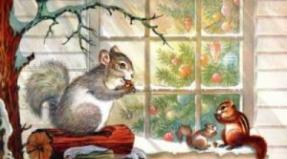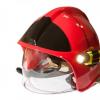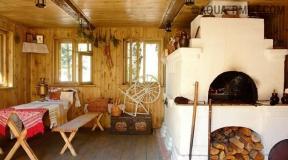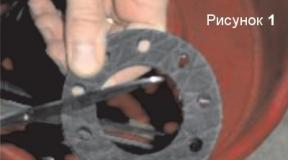What is natural selection in a nutshell. Natural selection. Forms of natural selection. Principles of classification of natural selection
It is a holistic doctrine of the historical development of the organic world.
The essence of evolutionary teaching lies in the following basic provisions:
1. All kinds of living beings inhabiting the Earth have never been created by someone.
2. Having arisen naturally, organic forms were slowly and gradually transformed and improved in accordance with environmental conditions.
3. The transformation of species in nature is based on such properties of organisms as heredity and variability, as well as natural selection constantly occurring in nature. Natural selection is carried out through the complex interaction of organisms with each other and with factors of inanimate nature; this relationship Darwin called the struggle for existence.
4. The result of evolution is the adaptability of organisms to the conditions of their habitat and the diversity of species in nature.
Natural selection. However, Darwin's main merit in creating the theory of evolution lies in the fact that he developed the doctrine of natural selection as the leading and guiding factor in evolution. Natural selection, according to Darwin, is a set of changes occurring in nature that ensure the survival of the fittest individuals and their predominant offspring, as well as the selective destruction of organisms that are unadapted to existing or changing conditions. environment.
In the process of natural selection, organisms adapt, i.e. they develop the necessary adaptations to the conditions of existence. As a result of competition different types having similar vital needs, less adapted species die out. Improving the mechanism of adaptation of organisms leads to the fact that the level of their organization is gradually becoming more complicated and thus the evolutionary process is carried out. At the same time, Darwin drew attention to such characteristic features of natural selection as the gradual and slow process of change and the ability to summarize these changes into large, decisive causes leading to the formation of new species.
Based on the fact that natural selection acts among diverse and unequal individuals, it is considered as the total interaction of hereditary variability, preferential survival and reproduction of individuals and groups of individuals better adapted than others to given conditions of existence. Therefore, the doctrine of natural selection as a driving and guiding factor historical development The organic world is central to Darwin's theory of evolution.
Forms of natural selection:
Driving selection is a form of natural selection that operates in a directed change in environmental conditions. Described by Darwin and Wallace. In this case, individuals with traits that deviate in a certain direction from the average value receive advantages. At the same time, other variations of the trait (its deviations in the opposite direction from the average value) are subjected to negative selection.
As a result, in the population from generation to generation, there is a shift in the average value of the trait in a certain direction. At the same time, the pressure of driving selection must correspond to the adaptive capabilities of the population and the rate of mutational changes (otherwise, environmental pressure can lead to extinction).
An example of the action of motive selection is "industrial melanism" in insects. "Industrial melanism" is a sharp increase in the proportion of melanistic (having a dark color) individuals in those populations of insects (for example, butterflies) that live in industrial areas. Due to industrial impact, tree trunks darkened significantly, and light lichens also died, which made light butterflies more visible to birds, and dark ones worse.
In the 20th century, in a number of areas, the proportion of dark-colored butterflies in some well-studied populations of the birch moth in England reached 95%, while the first dark butterfly (morfa carbonaria) was captured in 1848.
Driving selection is carried out when the environment changes or adapts to new conditions with the expansion of the range. It preserves hereditary changes in a certain direction, shifting the rate of reaction accordingly. For example, during the development of the soil as a habitat for various unrelated groups of animals, the limbs turned into burrowing ones.
Stabilizing selection- a form of natural selection, in which its action is directed against individuals with extreme deviations from the average norm, in favor of individuals with an average severity of the trait. The concept of stabilizing selection was introduced into science and analyzed by I. I. Shmalgauzen.
Many examples of the action of stabilizing selection in nature have been described. For example, at first glance it seems that individuals with maximum fecundity should make the greatest contribution to the gene pool of the next generation. However, observations of natural populations of birds and mammals show that this is not the case. The more chicks or cubs in the nest, the more difficult it is to feed them, the smaller and weaker each of them. As a result, individuals with average fecundity turn out to be the most adapted.
Selection in favor of averages has been found for a variety of traits. In mammals, very low and very high birth weight newborns are more likely to die at birth or in the first weeks of life than middle weight newborns. Accounting for the size of the wings of sparrows that died after a storm in the 50s near Leningrad showed that most of them had too small or too large wings. And in this case, the average individuals turned out to be the most adapted.
Disruptive (tearing) selection- a form of natural selection, in which conditions favor two or more extreme variants (directions) of variability, but do not favor the intermediate, average state of the trait. As a result, several new forms may appear from one initial one. Darwin described the operation of disruptive selection, believing that it underlies divergence, although he could not provide evidence for its existence in nature. Disruptive selection contributes to the emergence and maintenance of population polymorphism, and in some cases can cause speciation.
One of the possible situations in nature in which disruptive selection comes into play is when a polymorphic population occupies a heterogeneous habitat. At the same time, different forms adapt to different ecological niches or subniches.
An example of disruptive selection is the formation of two races in a large rattle in hay meadows. Under normal conditions, the flowering and seed ripening periods of this plant cover the whole summer. But in hay meadows, seeds are produced mainly by those plants that have time to bloom and ripen either before the mowing period, or bloom at the end of summer, after mowing. As a result, two races of rattle are formed - early and late flowering.
Disruptive selection was carried out artificially in experiments with Drosophila. The selection was carried out according to the number of setae, leaving only individuals with a small and large number of setae. As a result, from about the 30th generation, the two lines diverged very strongly, despite the fact that the flies continued to interbreed with each other, exchanging genes. In a number of other experiments (with plants), intensive crossing prevented the effective action of disruptive selection.
Sexual selection is natural selection for reproductive success. The survival of organisms is an important but not the only component of natural selection. Another important component is attractiveness to members of the opposite sex. Darwin called this phenomenon sexual selection. "This form of selection is determined not by the struggle for existence in the relations of organic beings among themselves or with external conditions, but by the rivalry between individuals of one sex, usually males, for the possession of individuals of the other sex."
Traits that reduce the viability of their carriers can emerge and spread if the advantages they provide in breeding success are significantly greater than their disadvantages for survival. When choosing males, females do not think about the reasons for their behavior. When an animal feels thirsty, it does not reason that it should drink water in order to restore the water-salt balance in the body - it goes to the watering place because it feels thirsty.
In the same way, females, choosing bright males, follow their instincts - they like bright tails. Those who instinctively prompted a different behavior did not leave offspring. The logic of the struggle for existence and natural selection is the logic of a blind and automatic process that, acting constantly from generation to generation, has formed that amazing variety of forms, colors and instincts that we observe in the world of living nature.
When analyzing the causes of an increase in the organization of organisms or their adaptability to living conditions, Darwin drew attention to the fact that selection does not necessarily require the selection of the best, it can only be reduced to the destruction of the worst. This is exactly what happens in unconscious selection. But the destruction (elimination) of the worst, less adapted to the existence of organisms in nature, can be observed at every step. Consequently, natural selection can be carried out by the "blind" forces of nature.
Darwin emphasized that the expression "natural selection" should in no case be understood in the sense that someone conducts this selection, since this term speaks of the action of the elemental forces of nature, as a result of which organisms adapted to given conditions survive and die. unadapted. The accumulation of useful changes leads first to small, and then to large changes. This is how new varieties, species, genera and other systematic units of a higher rank appear. This is the leading, creative role of natural selection in evolution.
Elementary evolutionary factors. Mutation process and genetic combinatorics. Population waves, isolation, genetic drift, natural selection. Interaction of elementary evolutionary factors.
Elementary evolutionary factors are stochastic (probabilistic) processes occurring in populations that serve as sources of primary intrapopulation variability.
3. Periodic with high amplitude. Found in a wide variety of organisms. Often they are periodic in nature, for example, in the "predator-prey" system. May be associated with exogenous rhythms. It is this type of population waves that plays the greatest role in evolution.
History reference. The expression “waves of life” (“Wave of life”) was probably used for the first time by the explorer of the South American pampas Hudson (W.H. Hudson, 1872-1873). Hudson noted that under favorable conditions (light, frequent showers) the vegetation that usually burns out has been preserved; an abundance of flowers gave birth to an abundance of bumblebees, then mice, and then birds that fed on mice (including cuckoos, storks, short-eared owls).
S.S. Chetverikov drew attention to the waves of life, noting the appearance in 1903 in the Moscow province of some species of butterflies that had not been found there for 30 ... 50 years. Before that, in 1897 and somewhat later, there was a mass appearance of the gypsy moth, which exposed vast areas of forests and caused significant damage to orchards. In 1901, the appearance in significant amount butterflies admiral. He outlined the results of his observations in a short essay "Waves of Life" (1905).
If a mutation with a frequency of 10-6 appears during the period of maximum population size (for example, a million individuals), then the probability of its phenotypic manifestation will be 10-12. If, during the period of decline in the population to 1000 individuals, the carrier of this mutation survives by chance, then the frequency of the mutant allele will increase to 10-3. The same frequency will remain in the period of the subsequent increase in the number, then the probability of the phenotypic manifestation of the mutation will be 10-6.
Insulation. Provides manifestation of the Baldwin effect in space.
In a large population (for example, one million diploid individuals), a mutation rate of 10-6 means that about one in a million individuals is a carrier of the new mutant allele. Accordingly, the probability of the phenotypic manifestation of this allele in a diploid recessive homozygote is 10-12 (one trillionth).
If this population is divided into 1000 small isolated populations of 1000 individuals, then one of the isolated populations will most likely contain one mutant allele, and its frequency will be 0.001. The probability of its phenotypic manifestation in the next subsequent generations will be (10 - 3) 2 = 10 - 6 (one millionth). In ultra-small populations (tens of individuals), the probability of a mutant allele in the phenotype increases to (10 - 2)2 = 10 - 4 (one ten-thousandth).
Thus, only due to the isolation of small and ultra-small populations, the chances of a phenotypic manifestation of a mutation in the next generations will increase thousands of times. At the same time, it is difficult to assume that the same mutant allele appears in the phenotype by chance in different small populations. Most likely, each small population will be characterized by a high frequency of one or a few mutant alleles: either a, or b, or c, etc.
Natural selection is a process originally defined by Charles Darwin as leading to the survival and preferential reproduction of individuals that are more adapted to given environmental conditions and have useful hereditary traits. In accordance with Darwin's theory and the modern synthetic theory of evolution, the main material for natural selection is random hereditary changes - recombination of genotypes, mutations and their combinations.
Natural selection checks organisms for compliance with living conditions and is carried out in various forms that have their own characteristics. What form or mechanism of selection acts on a given group of organisms depends on climatic, geological and other conditions.
The driving form of natural selection preserves useful deviations from the average norm.
This deviation can be any trait that increases the survival and fertility of some organisms compared to others.
There are two types of motive selection:
- transitive (transitive);
- directed.
Transitional selection is the development of an initially small form that has gained an advantage under changing environmental conditions.
TOP 4 articleswho read along with this
An example of such selection is the development of industrial melanism in Lepidoptera.
Thus, the birch moth previously had about 98% of light-colored individuals in populations. As the bark of trees darkened in industrial areas, dark-colored moths began to predominate, since they became less visible to birds.
The action of transitive selection is reversible, and when external conditions change, the ratio of dark and light individuals will also change.
With directional selection, the formation and reproduction of forms that differ in some way from the original form occur. Such selection takes place under conditions of unidirectional changes in the environment.

Rice. 1. Driving selection.
Unlike transitional selection, in this type of selection there is no ready-made different form, and useful changes accumulate in ordinary representatives of the species.
For example, bacteria can mutate when exposed to antibiotics. The resulting mutants are resistant to doses much higher than the original.
Stabilizing selection
If we talk briefly about the stabilizing form of natural selection, then this is the preservation of average norms.
The condition of stabilizing selection is the constant parameters of the environment, and in this it is opposite to the driving one.

Rice. 2. Stabilizing selection.
Each species has an optimal average fecundity rate and the weight of cubs born.
If birds lay eggs below the norm, this may not be enough to maintain the population. If the chicks hatch more than the average norm, then the parents risk not feeding them.
IN this case we see the action of stabilizing selection. Increased fertility is not an advantage in conditions of competition and lack of food.
Driving and stabilizing are the two main forms of natural selection, which are essentially two sides of the same process.
Tearing selection
The tearing, or disruptive, form of selection divides a previously single population into two or more new ones.
Thus, the female butterflies of the African sailboat developed three forms, imitating three different inedible species of butterflies.

Rice. 3. Three forms of females of the African swallowtail.
Having such a similarity is more beneficial to a population than mimicking just one species.
Disruptive Selection Guides Stratifying Evolution , as a result of which new groups of organisms are formed, for example, many orders in the class of mammals.
Table "Forms of natural selection"
|
driving |
Stabilizing |
Tearing |
|
|
Validity conditions |
Gradual environmental changes |
Constant environmental conditions |
Several options for adapting to the environment |
|
Orientation |
In favor of individuals with useful, different from the original, features |
Against the extreme values of the trait in favor of the average |
Against the mean values of the feature in favor of the extreme |
|
Result |
Create a new average rate |
Preservation of the average rate |
Creation of two or more new rules |
|
The emergence of populations resistant to pesticides, antibiotics, etc. |
Preservation of the shape and size of the flower in insect-pollinated plants to match the size of the pollinator; relict species |
Persistence of groups of insects with either strongly developed or small wings in conditions of frequent windy weather |
What have we learned?
Studying in biology the three forms of natural selection, we have given them brief description. Forms of selection differ in: conditions, focus, results. Stabilizing selection preserves old adaptations, while disruptive and motive selection preserves new ones. At the same time, the purpose of all forms is the adaptation of organisms to the conditions of existence.
Topic quiz
Report Evaluation
average rating: 4.6. Total ratings received: 148.
Natural selection is a process originally defined by Charles Darwin as leading to the survival and preferential reproduction of individuals who are more adapted to given environmental conditions and have useful hereditary traits. In accordance with Darwin's theory and the modern synthetic theory of evolution, the main material for natural selection is random hereditary changes - recombination of genotypes, mutations and their combinations.
In the absence of a sexual process, natural selection leads to an increase in the proportion of a given genotype in the next generation. However, natural selection is "blind" in the sense that it "evaluates" not genotypes, but phenotypes, and the preferential transfer to the next generation of genes of an individual possessing useful signs, occurs regardless of whether these traits are inherited.
There are different classifications of forms of selection. A classification based on the nature of the influence of selection forms on the variability of a trait in a population is widely used.
driving selection- a form of natural selection, which operates with a directed change in environmental conditions. Described by Darwin and Wallace. In this case, individuals with traits that deviate in a certain direction from the average value receive advantages. At the same time, other variations of the trait (its deviations in the opposite direction from the average value) are subjected to negative selection. As a result, in the population from generation to generation, there is a shift in the average value of the trait in a certain direction. At the same time, the pressure of driving selection must correspond to the adaptive capabilities of the population and the rate of mutational changes (otherwise, environmental pressure can lead to extinction).
An example of the action of motive selection is "industrial melanism" in insects. "Industrial melanism" is a sharp increase in the proportion of melanistic (having a dark color) individuals in those populations of insects (for example, butterflies) that live in industrial areas. Due to industrial impact, tree trunks darkened significantly, and light lichens also died, which made light butterflies more visible to birds, and dark ones worse. In the 20th century, in a number of areas, the proportion of dark-colored butterflies in some well-studied populations of the birch moth in England reached 95%, while the first dark-colored butterfly (morfa carbonaria) was captured in 1848.
Driving selection is carried out when the environment changes or adapts to new conditions with the expansion of the range. It preserves hereditary changes in a certain direction, shifting the rate of reaction accordingly. For example, during the development of the soil as a habitat for various unrelated groups of animals, the limbs turned into burrowing ones.
Stabilizing selection- a form of natural selection, in which its action is directed against individuals with extreme deviations from the average norm, in favor of individuals with an average severity of the trait. The concept of stabilizing selection was introduced into science and analyzed by I.I. Schmalhausen.
Many examples of the action of stabilizing selection in nature have been described. For example, at first glance it seems that individuals with maximum fecundity should make the greatest contribution to the gene pool of the next generation. However, observations of natural populations of birds and mammals show that this is not the case. The more chicks or cubs in the nest, the more difficult it is to feed them, the smaller and weaker each of them. As a result, individuals with average fecundity turn out to be the most adapted.
Selection in favor of averages has been found for a variety of traits. In mammals, very low and very high birth weight newborns are more likely to die at birth or in the first weeks of life than middle weight newborns. Accounting for the size of the wings of sparrows that died after a storm in the 50s near Leningrad showed that most of them had too small or too large wings. And in this case, the average individuals turned out to be the most adapted.
Disruptive (tearing) selection- a form of natural selection, in which conditions favor two or more extreme variants (directions) of variability, but do not favor the intermediate, average state of the trait. As a result, several new forms may appear from one initial one. Darwin described the operation of disruptive selection, believing that it underlies divergence, although he could not provide evidence for its existence in nature. Disruptive selection contributes to the emergence and maintenance of population polymorphism, and in some cases can cause speciation.
One of the possible situations in nature in which disruptive selection comes into play is when a polymorphic population occupies a heterogeneous habitat. At the same time, different forms adapt to different ecological niches or subniches.
An example of disruptive selection is the formation of two races in a large rattle in hay meadows. Under normal conditions, the flowering and seed ripening periods of this plant cover the whole summer. But in hay meadows, seeds are produced mainly by those plants that have time to bloom and ripen either before the mowing period, or bloom at the end of summer, after mowing. As a result, two races of the rattle are formed - early and late flowering.
Disruptive selection was carried out artificially in experiments with Drosophila. The selection was carried out according to the number of setae, leaving only individuals with a small and large number of setae. As a result, from about the 30th generation, the two lines diverged very strongly, despite the fact that the flies continued to interbreed with each other, exchanging genes. In a number of other experiments (with plants), intensive crossing prevented the effective action of disruptive selection.
sexual selection This is natural selection for success in reproduction. The survival of organisms is an important but not the only component of natural selection. Another important component is attractiveness to members of the opposite sex. Darwin called this phenomenon sexual selection. "This form of selection is determined not by the struggle for existence in the relations of organic beings among themselves or with external conditions, but by the rivalry between individuals of the same sex, usually males, for the possession of individuals of the other sex." Traits that reduce the viability of their carriers can emerge and spread if the advantages they provide in breeding success are significantly greater than their disadvantages for survival. Two main hypotheses about the mechanisms of sexual selection have been proposed. According to the “good genes” hypothesis, the female “reasons” as follows: “If this male, despite his bright plumage and long tail, somehow managed not to die in the clutches of a predator and survive to puberty, then, therefore, he has good the genes that let him do it. So, he should be chosen as a father for his children: he will pass on his good genes to them. By choosing bright males, females choose good genes for their offspring. According to the “attractive sons” hypothesis, the logic of female selection is somewhat different. If bright males, for whatever reason, are attractive to females, then it is worth choosing a bright father for your future sons, because his sons will inherit the bright color genes and will be attractive to females in the next generation. Thus, a positive feedback occurs, which leads to the fact that from generation to generation the brightness of the plumage of males is more and more enhanced. The process goes on increasing until it reaches the limit of viability. In choosing males, females are no more and no less logical than in all other behavior. When an animal feels thirsty, it does not reason that it should drink water in order to restore the water-salt balance in the body - it goes to the watering hole because it feels thirsty. In the same way, females, choosing bright males, follow their instincts - they like bright tails. All those who instinctively prompted a different behavior, all of them left no offspring. Thus, we discussed not the logic of females, but the logic of the struggle for existence and natural selection - a blind and automatic process that, acting constantly from generation to generation, has formed all that amazing variety of forms, colors and instincts that we observe in the world of wildlife. .
The situation, but you can act at random. It is enough to create a wide range of diverse individuals - and, ultimately, the fittest will survive.
- At first an individual appears with new, completely random properties
- Then she is or is not able to leave offspring, depending on these properties
- Finally, if the outcome of the previous stage is positive, then she leaves offspring and her descendants inherit the newly acquired properties
At present, the partly naive views of Darwin himself have been partly reworked. So, Darwin imagined that changes should occur very smoothly, and the spectrum of variability is continuous. Today, however, the mechanisms of natural selection are explained with the help of genetics, which brings some originality to this picture. Mutations in the genes that operate in the first step of the above process are essentially discrete. It is clear, however, that the basic essence of Darwin's idea has remained unchanged.
Forms of natural selection
driving selection
Driving selection - a form of natural selection, when environmental conditions contribute to a certain direction of change in any trait or group of traits. At the same time, other possibilities for changing the trait are subjected to negative selection. As a result, in a population from generation to generation, there is a shift in the average value of the trait in a certain direction. At the same time, the pressure of driving selection must correspond to the adaptive capabilities of the population and the rate of mutational changes (otherwise, environmental pressure can lead to extinction).
A modern case of motive selection is the "industrial melanism of English butterflies". "Industrial melanism" is a sharp increase in the proportion of melanistic (having a dark color) individuals in those butterfly populations that live in industrial areas. Due to industrial impact, tree trunks darkened significantly, and light lichens also died, which made light butterflies more visible to birds, and dark ones worse. In the 20th century, in a number of regions, the proportion of dark-colored butterflies reached 95%, while for the first time a dark butterfly (Morfa carbonaria) was caught in 1848.
Driving selection is carried out when the environment changes or adapts to new conditions with the expansion of the range. It preserves hereditary changes in a certain direction, shifting the rate of reaction accordingly. For example, when developing the soil as a habitat for various unrelated groups of animals, the limbs turned into burrowing ones.
Stabilizing selection
Stabilizing selection- a form of natural selection, in which the action is directed against individuals with extreme deviations from the average norm, in favor of individuals with an average severity of the trait.
Many examples of the action of stabilizing selection in nature have been described. For example, at first glance it seems that individuals with maximum fecundity should make the greatest contribution to the gene pool of the next generation. However, observations of natural populations of birds and mammals show that this is not the case. The more chicks or cubs in the nest, the more difficult it is to feed them, the smaller and weaker each of them. As a result, individuals with average fecundity turn out to be the most adapted.
Selection in favor of averages has been found for a variety of traits. In mammals, very low and very high birth weight newborns are more likely to die at birth or in the first weeks of life than middle weight newborns. Accounting for the size of the wings of birds that died after the storm showed that most of them had too small or too large wings. And in this case, the average individuals turned out to be the most adapted.
Disruptive selection
Disruptive (tearing) selection- a form of natural selection, in which conditions favor two or more extreme variants (directions) of variability, but do not favor the intermediate, average state of the trait. As a result, several new forms may appear from one initial one. Disruptive selection contributes to the emergence and maintenance of population polymorphism, and in some cases can cause speciation.
One of the possible situations in nature in which disruptive selection comes into play is when a polymorphic population occupies a heterogeneous habitat. At the same time, different forms adapt to different ecological niches or subniches.
An example of disruptive selection is the formation of two races in the meadow rattle in hay meadows. Under normal conditions, the flowering and seed ripening periods of this plant cover the whole summer. But in hay meadows, seeds are produced mainly by those plants that have time to bloom and ripen either before the mowing period, or bloom at the end of summer, after mowing. As a result, two races of the rattle are formed - early and late flowering.
Disruptive selection was carried out artificially in experiments with Drosophila. The selection was carried out according to the number of setae, leaving only individuals with a small and large number of setae. As a result, from about the 30th generation, the two lines diverged very strongly, despite the fact that the flies continued to interbreed with each other, exchanging genes. In a number of other experiments (with plants), intensive crossing prevented the effective action of disruptive selection.
Cut-off selection
Cut-off selection is a form of natural selection. Its action is opposite to positive selection. Cut-off selection culls out from the population the vast majority of individuals that carry traits that sharply reduce viability under given environmental conditions. With the help of cut-off selection, strongly harmful alleles are removed from the population. Also, individuals with chromosomal rearrangements and a set of chromosomes that sharply disrupt the normal operation of the genetic apparatus can be subjected to cutting selection.
positive selection
positive selection is a form of natural selection. Its action is the opposite of clipping selection. Positive selection increases the number of individuals in the population that have useful traits that increase the viability of the species as a whole. With the help of positive selection and cutting selection, a change in species is carried out (and not only through the destruction of unnecessary individuals, then any development should stop, but this does not happen).
Examples of positive selection include: a stuffed Archeopteryx can be used as a glider, but a stuffed swallow or seagull cannot. But the first birds flew better than Archeopteryx. Another example of positive selection is the emergence of predators that outperform many other warm-blooded creatures in their "mental abilities". Or the emergence of reptiles such as crocodiles, which have a four-chambered heart and are able to live both on land and in water.
Private directions of natural selection
- Survival of the most adapted species and populations, for example, species with gills in the water, since fitness allows you to win the fight for survival.
- Survival of physically healthy organisms.
- The survival of the physically strongest organisms, since the physical struggle for resources is an integral part of life. It is important in intraspecific struggle.
- Survival of the most sexually successful organisms, as sexual reproduction is the dominant mode of reproduction. This is where sexual selection comes into play.
However, all these cases are particular, and the main thing is the successful preservation in time. Therefore, sometimes these directions are violated in order to follow the main goal.
The role of natural selection in evolution
Darwin did not dare to publish his theory for a long time, because. I saw the problem of ants, which could only be explained from the standpoint of genetics.
see also
Links
- "Problems of macroevolution" - website of paleontologist A. V. Markov
- "Forms of natural selection" - an article with well-known examples: the color of butterflies, people's resistance to malaria, and more
- "Evolution based on patterns" - an article about whether the role of mutations in the evolutionary process is great, or some signs exist in advance, and then develop under the influence of driving selection
| evolutionary biology | |
|---|---|
| Mechanisms and processes | Adaptation Speciation Genetic drift Natural selection Heredity Variability Microevolution Macroevolution Mutations Gene transfer |
| The emergence of life | Chemical evolution RNA world hypothesis Biological evolution |
| History of evolutionary doctrine | |
Driving selection. Natural selection always leads to an increase in the average fitness of populations. Changes in external conditions can lead to changes in the fitness of individual genotypes. In response to these changes, natural selection, using a huge store of genetic diversity for many different traits, leads to significant shifts in the genetic structure of the population. If the external environment is constantly changing in a certain direction, then natural selection changes the genetic structure of the population in such a way that its fitness in these changing conditions remains maximum. In this case, the frequencies of individual alleles in the population change. The average values of adaptive traits in populations also change. In a number of generations, their gradual shift in a certain direction can be traced. This form of selection is called driving selection.
A classic example of motive selection is the evolution of color in the birch moth. The color of the wings of this butterfly imitates the color of the bark of trees covered with lichens, on which it spends daylight hours. Obviously, such a protective coloration was formed over many generations of previous evolution. However, with the beginning of the industrial revolution in England, this device began to lose its importance. Atmospheric pollution has led to the mass death of lichens and the darkening of tree trunks. Light butterflies on a dark background became easily visible to birds. Starting from the middle of the 19th century, mutant dark (melanistic) forms of butterflies began to appear in populations of the birch moth. Their frequency increased rapidly. TO late XIX century, some urban populations of the moth were almost entirely composed of dark forms, while light forms still predominated in rural populations. This phenomenon has been called industrial melanism. Scientists have found that birds in polluted areas are more likely to eat light forms, while in clean areas they are more likely to eat dark forms. The imposition of restrictions on atmospheric pollution in the 1950s caused natural selection to change direction again, and the frequency of dark forms in urban populations began to decline. They are almost as rare today as they were before the Industrial Revolution.
Driving selection brings the genetic composition of populations in line with changes in the external environment so that the average fitness of populations is maximum. On the island of Trinidad, guppy fish live in different water bodies. Many of those that live in the lower reaches of the rivers and in the ponds perish in the teeth of predatory fish. In the upper reaches, life for guppies is much calmer - there are few predators. These differences in environmental conditions led to the fact that the "top" and "grassroots" guppies evolved in different directions. The "grassroots", which are under constant threat of extermination, begin to breed at an earlier age and produce many very small fry. The chance of survival of each of them is very small, but there are a lot of them and some of them have time to multiply. "Horse" reach puberty later, their fertility is lower, but the offspring are larger. When the researchers transferred the "grassroots" guppies to uninhabited reservoirs in the upper reaches of the rivers, they observed a gradual change in the type of development of the fish. 11 years after the move, they became much larger, entered breeding later and produced fewer but larger offspring.
The rate of change in allele frequencies in the population and the average values of traits under the action of selection depends not only on the intensity of selection, but also on the genetic structure of traits, on which there is a turnover. Selection against recessive mutations is much less effective than against dominant ones. In the heterozygote, the recessive allele does not appear in the phenotype and therefore eludes selection. Using the Hardy-Weinberg equation, one can estimate the rate of change in the frequency of a recessive allele in a population depending on the intensity of selection and the initial ratio of frequencies. The lower the allele frequency, the slower its elimination occurs. In order to reduce the frequency of recessive lethality from 0.1 to 0.05, only 10 generations are needed; 100 generations - to reduce it from 0.01 to 0.005 and 1000 generations - from 0.001 to 0.0005.
The driving form of natural selection plays a decisive role in the adaptation of living organisms to external conditions that change over time. It also ensures the wide distribution of life, its penetration into all possible ecological niches. It is a mistake to think, however, that under stable conditions of existence, natural selection ceases. Under such conditions, it continues to act in the form of stabilizing selection.
stabilizing selection. Stabilizing selection preserves the state of the population, which ensures its maximum fitness under constant conditions of existence. In each generation, individuals deviating from the average are removed. optimal value according to adaptive traits.
Many examples of the action of stabilizing selection in nature have been described. For example, at first glance it seems that individuals with maximum fecundity should make the greatest contribution to the gene pool of the next generation. However, observations of natural populations of birds and mammals show that this is not the case. The more chicks or cubs in the nest, the more difficult it is to feed them, the smaller and weaker each of them. As a result, individuals with average fecundity turn out to be the most adapted.
Selection in favor of averages has been found for a variety of traits. In mammals, very low and very high birth weight newborns are more likely to die at birth or in the first weeks of life than middle weight newborns. Accounting for the size of the wings of birds that died after the storm showed that most of them had too small or too large wings. And in this case, the average individuals turned out to be the most adapted.
What is the reason for the constant appearance of poorly adapted forms in constant conditions of existence? Why is natural selection unable to once and for all clear a population of unwanted evasive forms? The reason is not only and not so much in the constant emergence of more and more new mutations. The reason is that heterozygous genotypes are often the fittest. When crossing, they constantly give splitting and homozygous descendants with reduced fitness appear in their offspring. This phenomenon is called balanced polymorphism.
The most widely known example of such a polymorphism is sickle cell anemia. This severe blood disease occurs in people homozygous for a mutant hemoglobin allele ( HbS) and leads to their death at an early age. In most human populations, the frequency of this allele is very low and approximately equal to the frequency of its occurrence due to mutations. However, it is quite common in areas of the world where malaria is common. It turned out that heterozygotes for HbS have a higher resistance to malaria than homozygotes for the normal allele. Due to this, heterozygosity for this lethal allele in the homozygote is created and stably maintained in populations inhabiting malaria areas.
Stabilizing selection is a mechanism for the accumulation of variability in natural populations. The outstanding scientist I. I. Shmalgauzen was the first to pay attention to this feature of stabilizing selection. He showed that even under stable conditions of existence, neither natural selection nor evolution ceases. Even remaining phenotypically unchanged, the population does not cease to evolve. Its genetic makeup is constantly changing. Stabilizing selection creates such genetic systems that provide the formation of similar optimal phenotypes on the basis of a wide variety of genotypes. Such genetic mechanisms as dominance, epistasis, complementary action of genes, incomplete penetrance and other means of concealing genetic variation owe their existence to stabilizing selection.
It is important to note here that the constancy of conditions does not mean their immutability. During the year, environmental conditions change regularly. Stabilizing selection adapts populations to these seasonal changes. Breeding cycles are timed to them, so that the young are born in that season of the year when food resources are maximum. All deviations from this optimal cycle, reproducible from year to year, are eliminated by stabilizing selection. Descendants born too early die from starvation, too late - they do not have time to prepare for winter. How do animals and plants know when winter is coming? On the onset of frost? No, it's not a very reliable pointer. Short-term temperature fluctuations can be very deceptive. If in some year it gets warmer earlier than usual, this does not mean at all that spring has come. Those who react too quickly to this unreliable signal risk being left without offspring. It is better to wait for a more reliable sign of spring - an increase in daylight hours. In most animal species, it is this signal that triggers the mechanisms of seasonal changes in vital functions: cycles of reproduction, molting, migration, etc. I.I. Schmalhausen convincingly showed that these universal adaptations arise as a result of stabilizing selection.
Thus, stabilizing selection, sweeping aside deviations from the norm, actively forms genetic mechanisms that ensure the stable development of organisms and the formation of optimal phenotypes based on various genotypes. It ensures the stable functioning of organisms in a wide range of fluctuations in external conditions familiar to the species.
disruptive selection. With stabilizing selection, individuals with an average manifestation of traits have an advantage, with driving selection - one of the extreme forms. Theoretically, another form of selection is conceivable - disruptive or tearing selection, when both extreme forms gain an advantage.
The formation of seasonal races in some weeds is explained by the action of disruptive selection. It was shown that the timing of flowering and seed ripening in one of the species of such plants - meadow rattle - stretched almost all summer, and most of the plants bloom and bear fruit in the middle of summer. However, in hay meadows, those plants that have time to bloom and produce seeds before mowing, and those that produce seeds at the end of summer, after mowing, receive advantages. As a result, two races of the rattle are formed - early and late flowering.
In certain situations, disruptive selection for traits related to ecological features (breeding time, preference for different types of food, different habitats) can lead to the formation of ecologically separate races within a species and then to speciation.
sexual selection. In males of many species, pronounced secondary sexual characteristics are found that at first glance seem maladaptive: the tail of a peacock, the bright feathers of birds of paradise and parrots, the scarlet combs of roosters, the enchanting colors of tropical fish, the songs of birds and frogs, etc. Many of these features make life difficult for their carriers, making them easily visible to predators. It would seem that these signs do not give any advantages to their carriers in the struggle for existence, and yet they are very widespread in nature. What role did natural selection play in their origin and spread?
We already know that the survival of organisms is an important but not the only component of natural selection. Another important component is attractiveness to members of the opposite sex. Ch. Darwin called this phenomenon sexual selection. He first mentioned this form of selection in The Origin of Species and later analyzed it in detail in The Descent of Man and Sexual Selection. He believed that "this form of selection is determined not by the struggle for existence in the relationship of organic beings among themselves or with external conditions, but by the rivalry between individuals of the same sex, usually males, for the possession of individuals of the other sex."
Sexual selection is natural selection for success in reproduction.. Traits that reduce the viability of their carriers can emerge and spread if the advantages they provide in breeding success are significantly greater than their disadvantages for survival. A male that lives a short time but is liked by females and therefore produces many offspring has a much higher cumulative fitness than one that lives long but leaves few offspring. In many animal species, the vast majority of males do not participate in reproduction at all. In each generation, fierce competition for females arises between males. This competition can be direct, and manifest itself in the form of a struggle for territories or tournament fights (Fig. XI.15.2). It can also occur in an indirect form and be determined by the choice of females. In cases where females choose males, male competition is manifested in the display of their bright appearance or complex courtship behavior. Females choose those males that they like the most. As a rule, these are the brightest males. But why do females like bright males?
The fitness of the female depends on how objectively she is able to assess the potential fitness of the future father of her children. She must choose a male whose sons will be highly adaptable and attractive to females.
Two main hypotheses about the mechanisms of sexual selection have been proposed.
According to the “attractive sons” hypothesis, the logic of female selection is somewhat different. If bright males, for whatever reason, are attractive to females, then it is worth choosing a bright father for your future sons, because his sons will inherit the bright color genes and will be attractive to females in the next generation. Thus, a positive feedback occurs, which leads to the fact that from generation to generation the brightness of the plumage of males is more and more enhanced. The process goes on increasing until it reaches the limit of viability. Imagine a situation where females choose males with a longer tail. Long-tailed males produce more offspring than males with short and medium tails. From generation to generation, the length of the tail increases, because females choose males not with a certain tail size, but with a larger than average size. In the end, the tail reaches such a length that its harm to the viability of the male is balanced by its attractiveness in the eyes of females.
In explaining these hypotheses, we tried to understand the logic of the action of female birds. It may seem that we expect too much from them, that such complex fitness calculations are hardly accessible to them. In fact, in choosing males, females are no more and no less logical than in all other behaviors. When an animal feels thirsty, it does not reason that it should drink water in order to restore the water-salt balance in the body - it goes to the watering hole because it feels thirsty. When a worker bee stings a predator attacking a hive, she does not calculate how much by this self-sacrifice she increases the cumulative fitness of her sisters - she follows instinct. In the same way, females, choosing bright males, follow their instincts - they like bright tails. All those who instinctively prompted a different behavior, all of them left no offspring. Thus, we discussed not the logic of females, but the logic of the struggle for existence and natural selection - a blind and automatic process that, acting constantly from generation to generation, has formed all that amazing variety of forms, colors and instincts that we observe in the world of wildlife. .



















